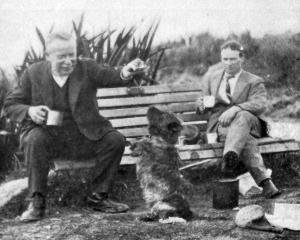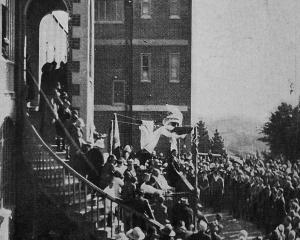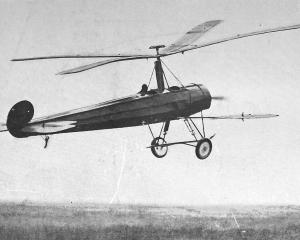A Caterpillar is attacking the cruciferous plants in various parts of Southland, preferably broccoli and swedes (reports the Times).
A farmer on Saturday said he had thought at first that it was the diamond-backed moth, which is making havoc of the swedes in some parts of Canterbury; but Mr Lennie, who has a chart of various insect pests compiled by the Government entomologists of the Australian States and New Zealand, has convinced him that it is the cabbage moth.
The insect is a very small one, and it deposits its eggs at the underleaf of the plants. These hatch out into green caterpillars, which burrow down well towards the heart of the plant, after attacking the upper part of the leaf.
It is fortunate for the swedes that the pest commenced its work so late in the season. Five weeks ago only parts of a field would be affected, but now the pest has spread over the paddocks, and may be seen on a calm warm afternoon flying about with great agility, and, it is presumed, at work depositing their eggs.
The season is now well advanced, and it is expected that their ravages will cease as far as field crops are concerned. In the gardens they have in many places done great mischief. Turnips appear not to be so subject to their attack as swedes, and in a lesser degree rape.
In spite of their attacks, the crops are bulbing well, although the depredations of the pest must have had some effect.
■Although Monday morning was intensely cold and wet there were continued evidences of sportsmen being out on the swamps and lakes about Kaitangata (says the corespondent of the Clutha Leader). Ducks, etc., although plentiful, proved rather shy, and it appears that no very large bags were obtained.
A brisk fusilade of fowling pieces from dawn onward on Monday heralded the opening of the season for shooting native game; but very few decent-sized bags came under the notice of the Wyndham Farmer.
On a sheet of water in Redan Valley, Mr B. Patterson accounted for five brace and a-half of grey deck; and to the guns of Messrs A. W. Crosbie, H. Hunter, and Thomas Marshall seven brace and a-half of similar waterfowl were laid low on the lagoons below Menzies Ferry.
■The Government of Fiji is beginning to act in regard to Germans (says a message from Suva to the Auckland Star). An official liquidator has been appointed to wind up the extensive business of Herdmann, Evers, and Co. A sale of £10,000 worth of this firm's stock was to be held by the receiver by public auction on April 25 and following days at Levuka.
Another Levuka firm is being liquidated. By the Levuka, leaving there on Wednesday, 10 to 12 Germans were to proceed to Sydney, under military guard, for internment.
A number of others are being required to take up their residence in the towns, where they can be kept under supervision and within prescribed limits.
Others, again, are being permitted to live within a radius of five miles in inland populated districts.
Altogether about 60 Germans are being dealt with.
■That the Waikaia district is eminently suitable for the growth of apples is evidenced from the number of specimens of this fruit which are at present on view in Gore (says the Mataura Ensign).
Four apples of the Yorkshire Greening variety grown in the orchard of Mr George Baxter, Wendonside, turned the scale at 1lb each. Another two, of the Brambaldening Seedling variety, from the orchard of Mr R. McIvor, weighed 1lb each.
Mr McIvor also had plums this season as big as hens' eggs.
- ODT, 4.5.1916.
COPIES OF PICTURE AVAILABLE FROM ODT FRONT OFFICE, LOWER STUART ST, OR WWW.OTAGOIMAGES.CO.NZ












